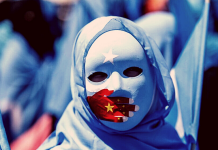Torrential rains from Cyclonic Storm Ditwah have triggered one of the most severe flooding disasters in Sri Lanka’s recent history, submerging vast areas across multiple provinces and leaving a trail of destruction in its wake.
As of Friday, at least 56 people have been confirmed dead, with dozens missing, thousands displaced, and hundreds of homes completely destroyed or severely damaged. The hardest-hit districts include Colombo, Gampaha, Kalutara, Ratnapura, Kegalle, and Badulla, where rivers have burst their banks and landslides have cut off entire communities.
The Disaster Management Centre (DMC) reports that over 300,000 people have been affected, with more than 5,000 seeking refuge in temporary relief camps. Critical infrastructure, including roads, bridges, railway tracks, and power supplies, has been extensively damaged, hampering rescue and relief operations.
Meteorologists warn that heavy rainfall—up to 250 mm in some areas—is expected to continue in the coming days as the cyclone moves toward India, raising fears of further worsening of the situation. The government has deployed over 20,500 armed forces personnel for rescue missions, while international aid, including helicopters from India’s INS Vikrant, is mobilizing support.
Authorities have described the current deluge as one of the worst flooding events since the catastrophic floods of 2017, underscoring the growing intensity of weather-related disasters in the island nation amid the northeast monsoon season and climate change.


















